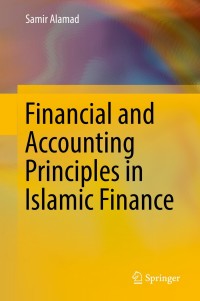Question
Robert (Bob) Walters, the owner of RFC, is looking to is purchasing a new boat to add to his current fleet of two. Bob is
Robert (Bob) Walters, the owner of RFC, is looking to is purchasing a new boat to add to his current fleet of two. Bob is purchasing the boat from Campion Marine in Kelowna, BC. (FOB shipping point). The cost of the boat is $200,000 plus $10,000 in shipping charges to transport it from Kelowna to St. Catherines (for simplicity, ignore any PST and GST). The boat is expected to have useful life of 10 years with a salvage value of $15,000 at that time. All boats are depreciated on a straight-line basis.
In order to finance this purchase, Bob is considering different financing options (see below) and is looking for advice on how to proceed.
Analyze the following 3 financing options and recommend which option is the best along with minimizing cash payment. Assume the boat purchase takes place on January 1st of the current year and that RFC has a December 31 year-end.
Financing Options
Bob would first like to know what the journal entry would be for the initial purchase of the boat, assuming financing has been arranged (ie. Bob has the cash available to purchase the boat). Assume shipping charges are paid using cash by the party responsible. Bob would also like to know what the depreciation journal entry will be at the end of the first year.
Financing Option #1 Long-Term Loan
A loan from the Niagara Credit Union for $200,000. The interest rate on the loan will be 5% with annual payments each December 31st consisting of an equal amount of principal (ie. $40,000 each year) plus applicable interest expense.
Bob would like to know what the journal entry is for the initial receipt of the loan as well as the first payment on December 31st of the current year.
Financing Option #2 Bond Issue
RFC will issue bonds on January 1st of the current year with a face value of $200,000, a coupon rate of 5% with interest paid semi-annually (July 1 and January 1) and a maturity of 10 years. Bonds with a similar risk profile currently have a yield of 6%.
Bob would like to know what the journal entry is for the issue of the bonds as well as the journal entries for the first interest payment and the year-end adjusting entry. If this option is chosen, RFC will use the effective interest rate method for accounting for the bonds.
Financing Option #3 Common Shares
RFC will issue 10,000 non-cumulative preferred shares at $20 per share to friends and family. Each share will have a dividend right of $2 per share. Prior to this financing, RFCs share capital consisted of:
Robert and his family 50,000 common shares
Lawrence Walters (Bobs brother) 2,000 cumulative preferred shares, $3 dividend right
All the current shares were issued when the company was formed five years. No dividends were paid for the prior two years, but were paid in full each year before that. Bob is expecting RFC to declare a $50,000 dividend on December 1st of the current year to be paid January 15th next year.
For this financing option, Bob would like to know the following:
- The journal entry for the issuance of the shares.
- A calculation to determine how much of the declared dividend will go to the preferred and common shareholders, assuming the dividend does get declared.
All journal entries related to the dividend that would occur in the current year only, assuming the dividend does get declared. RFC uses separate dividends declared accounts for each type of share (common, preferred), but uses only one dividend payable account.
Step by Step Solution
There are 3 Steps involved in it
Step: 1

Get Instant Access to Expert-Tailored Solutions
See step-by-step solutions with expert insights and AI powered tools for academic success
Step: 2

Step: 3

Ace Your Homework with AI
Get the answers you need in no time with our AI-driven, step-by-step assistance
Get Started


